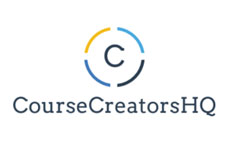
Do you ever since down to write a blog post or an email and just stare at a blank screen? Today you’ll get some secrets to make it easier and faster to write – and better connect with your audience from one of my favorite writers, MaryEllen Tribby.
“Here is a simple but powerful rule: always give people more than what they expect to get.”
~ Nelson Boswell
How to Engage & Connect for Greater Profits
By MaryEllen Tribby
Have you ever noticed that a lot of writing in your niche is actually fairly boring or not in the least bit helpful?
Well that’s actually good news for you. Because if everyone else in your niche is creating dry, mediocre content, then you’ll stand out if you create something entertaining, educational and enriching.
And if you really connect with your audience, you can bet they’ll want to read every word you publish. And over time consider you a trusted resource and once that happens you have a bona fide fan base!
That was exactly what happened to me almost six years ago when I started Working Moms Only. I noticed that the market was sooooo under-served. All the other newsletters and products were tedious and quite frankly not practical.
So how did I create this connection between words and the heart and souls of the audience?
Well just like this…
1) Tell Stories
Stories are good ways to connect with your readers, because a story tends to help you form that emotional connection. It helps the reader identify with you. And a story is much more memorable than simply telling a reader what to do.
You can write this story either about you or someone else. Either way, however, the story will be more impactful if the main character is very similar to your readers.
So if your readers are moms who are looking for an opportunity to make incremental money or money from home, then you’ll connect to these readers if your story is about a real mom who overcame this same problem.
Another thing a story can do is help demonstrate to your readers that you really understand them and their problems.
And when a reader feels like the author understands him, you can bet they will keep reading.
2) Create “Reader Oriented” Writing
Your readers have no doubt read plenty of articles,
reports and ebooks on the same topic as the one you’re writing about. However, a lot of this content is “author oriented.” That means that it seems to be more about
the author rather than the readers.
Example: You might read a book about dog training in which the author seems to boast repeatedly about his
credentials or delve into personal stories that actually aren’t of interest or relevant to the reader.
One way to quickly check if your writing is author-
oriented is to see how many times you’ve used words like “I” or “me” versus how often you use words like “you” and “yours.” You want to use more “you” writing, since this is reader-oriented writing.
Here’s a great example:
· Author-oriented writing: “I’m going to tell you about how I lost weight.”
· Reader-oriented writing: “You’re going to discover a weight-loss trick that’s worked for me – and it will work for you, too.”
3) Engage the Audience
If you’re writing a “how to” article, then it’s easy to fall into the familiar pattern of writing a straightforward article: “This
is step 1… this is step 2…”
Basically, it’s the same kind of article everyone else publishes. Instead, engage your audience by freshening up your writing.
This includes:
· Adding in your own tips. In particular, include unique tips and tricks not found anywhere else.
· Using stories to illustrate points. Be sure to engage all five of your reader’s senses to really bring him into your story.
· Inserting examples to make things more clear. Just look at the way I gave an example of reader versus author-oriented writing above.
· Including “spiced up” writing. For example, instead of merely describing someone as nervous, you could say “He was more nervous than a long-tailed cat in a room full of rocking chairs.”
That’s much more memorable, impactful and fun – don’t ya think?
You’re writing with a purpose, whether it’s to presell your readers, teach them something, solve a problem, overcome a challenge or just develop a good relationship with them.
However, these goals are not possible if your writing doesn’t engage and connect with your audience.
That’s why you’ll want to use the tips above to improve your ability to engage and connect with your readers!
And here’s the best news – you can start today. You can be among the first to check out my latest extraordinary new report, The 50 Top Idea Generators of All Time.
I guarantee you have never seen anything like it and the greatest thing about it is you can start making that extra money in as little as 24 hours from now!
Now Take Action…
Start today by evaluating your last few blog posts and eamils. Do they have stories that engage the reader and are oriented to them?
Then get The Top 50 Idea Generators of All Time report – and use it the next time you are staring at an empty screen and don’t know what to write!
